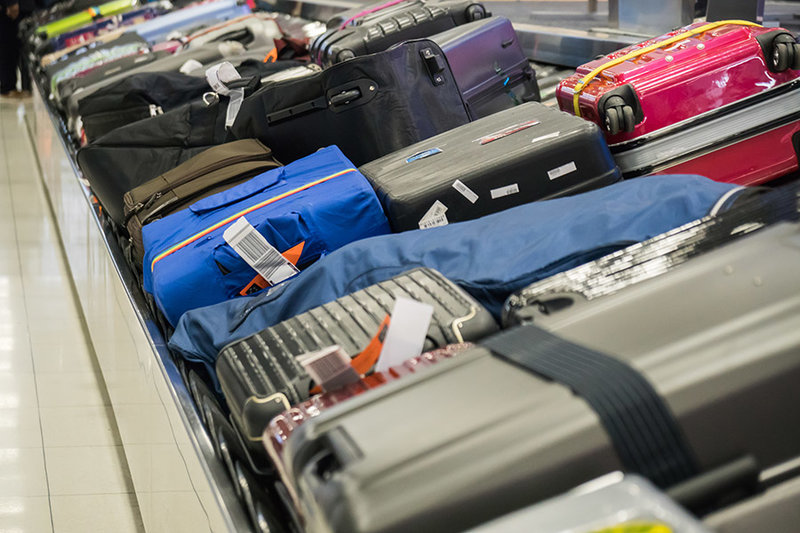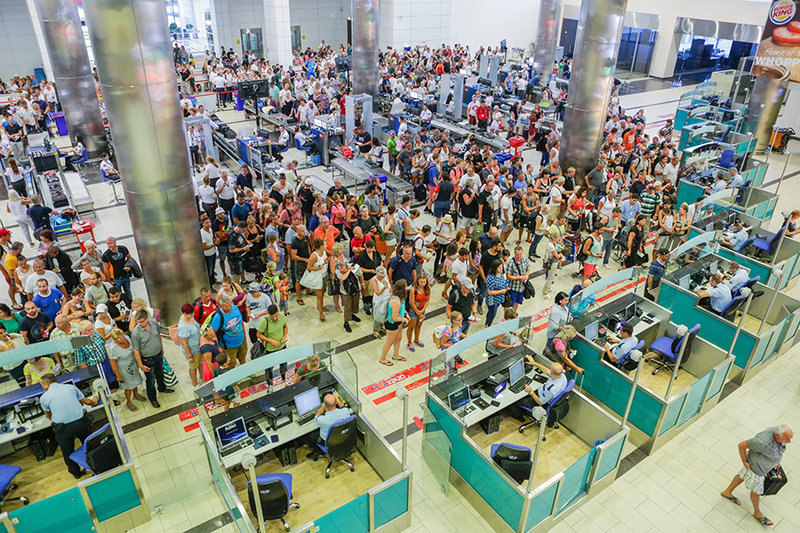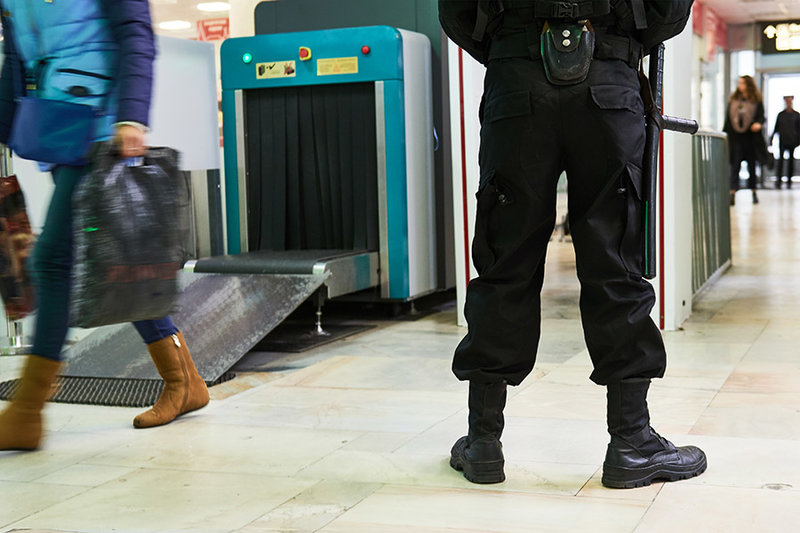security
Security on the airport concourse: flying’s black hole?
Security measures within airports are constantly being improved and tested, but what happens on the concourse receives far less scrutiny. Julian Turner asks Leticia Monteagudo, executive director for the Americas, at Smart Security Consultancy, whether there are security black holes
L
eticia Monteagudo is executive director of Smart Security Consultancy for the Americas. She is an expert on landside security, including passenger screening, terminal safety and infrastructure. She was formerly IATA regional manager, passenger facilitation and security for the Americas, and has collaborated with US Homeland Security and the Transportation Security Administration.
Leticia Monteagudo, executive director for the Americas, Smart Security Consultancy

Image courtesy of Benny Marty / Shutterstock.com
JULIAN TURNER: Take us through a typical Smart Security Consultancy airport assessment.
Leticia Monteagudo:
Smart Security carries out landside terminal and passenger flow assessments for domestic and international airports. We point out all the potential vulnerabilities, including congestion, queue management and security checkpoint procedures.
Each facility is unique. In the US alone we are talking about 450 airports and each one operates differently. They comply with Transportation Security Administration (TSA) security regulations, but the culture is different from airport to airport.
One of our focus areas is therefore passenger type – does the airport cater predominantly to leisure travellers or are there a lot of business passengers?
We spend a week on-site travelling through the airport as a passenger. We study six departing flights at different times of the day, including peak times, validating 100–500 passengers as they are processed from the counter to the kiosk to the checkpoint to the gate.
Our team also studies arrival flights, especially international ones, to assess how effectively the passengers are processed through immigration and customs. We identify the root problems of delays and give that information to the airport authority in the form of an exhaustive report.
We also assess how the interview process is performed by the airline personnel. Besides obvious questions such as ‘have you packed your bags’, what sort of intelligence or suspicious behaviour are they looking for? Another key issue is terminal design: if it is congested, what are the possibilities or vulnerabilities of someone carrying out an active shooting scenario? Where would people hide?

Image courtesy:
[Istanbul New Airport’s] contribution to the tourism sector is estimated to be $7bn
What technology solutions do you provide?
We look at technologies deployed at certain airports that gave a wave-through forecast anticipating different crowds in a certain area. Sensors provide the airport authority with a Bluetooth-based dashboard that enables them to see the amount of passengers entering the airport in the form of icons.
We can see at a glance where the congested areas are, meaning the airport authority can take a proactive approach to concourse security.
iBeacon technology will provide indoor directions, walking times to gates, lounge access and boarding alerts
Are airports doing enough to protect passengers and guests?
What I have found is that very rarely is an airport willing to spend what is a relatively small amount of money in order to identify what its potential security gaps are. The priority is not there.
With Antalya Airport in Turkey, for example, you will see police patrolling the exterior and interior of because of what happened [at Istanbul's Ataturk International Airport]. The same applies to Brussels and any other airport that has experienced a terrorist attack.
It’s only when an attack does happen that action is taken and then you have these precautious rings of security deployed. Other than that, every other airport in the world is of the opinion that ‘it will never happen here’. That is very dangerous.

Antalya Airport in Turkey. Image courtesy of Marius Dobilas / Shutterstock.com
How does the issue of increased passenger throughput impact terminal security?
Most modern airports are maxed out in terms of capacity. The terminals have become smaller and yet the airport must continue to attract new carriers with whole new fleets of aircraft that cater for a lot more people.
So, instead of bringing in aircraft carrying 150 people, you have aircraft with 400 passengers – how does the airport effectively process them? It can rapidly become a very complex environment and with capacity issues there becomes a real problem with security and queue management.
Vancouver, for example, is suffering a capacity crisis. I was surprised to see queues around escalators, through bathrooms, all the way through the terminal, just to get to the security checkpoint.
It is important to remember that airport terminals are public access areas. That means you have to keep monitoring who is entering and leaving, whether they hold a boarding pass or not, as the trend now is towards active shootings.
iBeacon technology will provide indoor directions, walking times to gates, lounge access and boarding alerts
Please provide an example of how security could be improved at a specific airport.
At Fort Lauderdale [in Florida, US] there was shooting in 2016 in the baggage claim area. The shooter should have been flagged from the moment he left his initial destination with a one-way ticket. Why weren’t his bags scanned? If someone has a one-way ticket you want to be able to scan that baggage.
The passenger identified he was checking in a gun, but there was no extra precaution taken when that bag was checked in or unloaded at the final destination. It was on the same carousel as the general passenger bag claim procedure. Now the system is different, but only after the fact.
Six months after the incident, I was invited back to the airport and many of the employees working in the terminal said that no one had received active shooter training and they wouldn’t know how to react if it were to happen again. That concerns me as an industry expert and as a passenger.
Which countries are best when it comes to airport terminal security?
Checkpoints in many international airports are run by third-party security guards that only get, say, ten days’ training. At Smart Security we look at how effectively that guard can read an X-ray interpretation, for example, and decide whether to perform a secondary check or release it.
In Latin America it is challenging for them to view security assessments as a priority because they feel they have the best relationship worldwide with all other governments and that nothing terrorist or active shooter-related would ever happen in their airports.

Image courtesy:
iBeacon technology will provide indoor directions, walking times to gates, lounge access and boarding alerts
What must governments and airport authorities now do to improve concourse security?
Governments need to take security to the next level. In the US, all airports are subject to TSA checkpoints and staff, but my understanding is that training is very basic.
My perception of the future going forward is that we are going to move through this whole active shooting scenario and get into something even more dangerous – namely the Sarin gas threat.
You can’t smell it, you can’t see it and airports don’t know if someone has it on them because it’s not a traditional weapon like a automatic rifle; it can be contained in something as innocuous as a flask.
You have to rely on technology that can detect such threats. We have dogs trained to sniff out nuclear vapour from up to a mile away but they are very expensive – up to $50,000 per animal.
Airports complain that they can’t afford security facilitation fees because they have to pass such costs on to the passengers in the form of fare rises, meaning they are no longer competitive with the latest low-cost carrier.
The randomness of TSA bag scanning that takes place behind the scenes should increase. At present, the TSA works to an ‘unpredictable ratio’, meaning one day the computer may scan one out of five bags, the next day it may be one in every 20.
You’ll never get airport security 100% bulletproof, of course, but you can raise the bar.